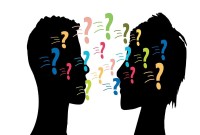- Home
- Business Processes
- Industry Knowledge
- Aerospace Industry
- Automotive Industry
- Banking Domain
- BFSI Industry
- Consumer/ FMCG Industry
- Chemicals Industry
- Engineering & Construction
- Energy Industry
- Education Domain
- Finance Domain
- Hospitality Domain
- Healthcare Industry
- Insurance Domain
- Retail Industry
- Travel and Tourism Domain
- Telecom Industry
- Leadership Skills
- eLearning
- Home
- Leadership
- Communication Skills
- Functions of Communication
Functions of Communication
Communication performs many functions, such as informing and generating awareness, educating, persuading, motivating, entertaining, etc. The functions of communication in an organization are to inform, persuade, and motivate. Employees need to have effective organizational communication in order to achieve excellent job performance. The communication between the top management and the employee needs to be effective for better work culture.
Sharing of Information:
Information is the key to progress in any organization. Business Communication is communication that promotes a product, service, marketing, or organization; relays information within a business, or functions as an official statement from a company. The primary objective of communication in management is to convey information—instructions, policies, procedures, decisions, etc., so the listener will hear, read, understand what is said, agree and accept the message, and react as intended by the manager or sender of the communication.
Communication plays an important role in information dissemination related to any form of human activity. Communication is the process of exchanging messages, ideas, facts, opinions, or feelings. The functions of communication in an organization are to inform, persuade, and motivate. Employees need to have effective organizational communication in order to achieve excellent job performance. Communication provides us with information about the environment we are placed in. It helps in molding our opinions, formulating decisions, and in turn making 'informed choices' to safeguard our interests as well those of the team or organization. Communication is a fundamental mechanism by which members of the group show their satisfaction and frustrations. Communication, therefore, provides for the emotional expression of feelings and fulfillment of social needs.
Decision-Making Process:
Communication results in the sharing of information, which in turn makes employees knowledgeable and thus productive. Communication provides the information individuals and groups need to make decisions by transmitting the data needed to identify and evaluate choices. Thus communication helps to facilitate decision making. Decision-making is the core of the management process. The relationship between communication and decision-making is inseparable since decision making must rely on the information. The decision is the triggering mechanism of communication. The manager is a decision-maker. But all decisions based on the communication of information to the management.
Training and Upskilling of Employees
Training of personnel is an ongoing process and communication plays an important role in the orientation and training of employees. The degree of learning depends to a great extent not only on the contents of training but also on how effectively the information and skills are shared. As we know, knowledge can be constructed through interaction between learners and peers and also other sources of information. Hence, effective communication results in effective teaching and training.
Networking & Socialization:
For the wellbeing of the organization society, nation, and culture it is crucial that we are exposed to different viewpoints so that we understand and appreciate the need for a plurality of ideas and diversity of views. Communication fosters the feeling of oneness in society by exposing the various social groups to different views. It develops the need to share and understand the feelings, emotions, hopes, aspirations, and expectations of varied groups in a social system.
Motivation:
A motivated individual plays a useful and active role in an organization. Communication fosters motivation by clarifying to employees what they must do, how well they are doing it, and how they can improve if performance is subpar. Communication motivates and persuades individuals to meet the mutually agreed-upon goals. Sharing success stories of those who have overcome the odds and have been able to achieve their goals can do this. This function of communication, although relevant in all walks of life is more pronounced in business and industry where communication is being increasingly used as a tool for motivation. The formation of specific goals, feedback on progress toward the goals, and reward for desired behavior all stimulate motivation and require communication.
Persuasion:
Yet another important function of communication is to persuade. This may be to influence us towards a new idea, technique, or a product and also to persuade us to buy these products. The manager will probably desire to influence or persuade the employee in a way that will help maintain favorable relationships. Other motivating goals or objectives of managerial communication may be social interchange, personal advancement, and self-expression. Conversely, the employee also has similar goals of communication in an organization. The industrial and corporate houses and advertising agencies, while taking messages of new products to potential consumers far and wide have amply exploited this function. Different mass communication media are used for this purpose.
Preservation of Organization Culture:
Culture is a set of norms, values, and principles shared among people in an organization. Communication helps to preserve the culture and heritage of the organization and the company. Through communication, senior leadership and management share the culture and values of the organization with the employees. The transmission of values from top to bottom has been taking place through internal communications, newsletters, and town halls as well as through written emails. In the modem world, different mass communication media have taken up this function. Effective communication is essential for a positive culture in the workplace. Transparency in communication is mandatory at all levels for a better understanding of work and better bonding among individuals.
Related Links
You May Also Like
-
Storming Stage of Team Development
Storming is the second stage of team development and this stage is characterized by a bid for power and inter-personal conflicts. Learn the key factors that occur in the storming stage and the strategies that a team leader can adopt to pass this stage of high winds
-
A manager or an employee in an organization who is experiencing a high level of stress may develop high blood pressure, ulcers, irritability, difficulty in making routine decisions, loss of appetite, accident proneness, and the like. These can be subsumed under three general categories, physiological, psychological, and behavioral symptoms. Stress can give rise to a number of changes.
-
In the field of communication studies, there are numerous models. No one model is suitable for all purposes and all levels of analysis. Some common models are known as Lasswell Model, George Gerbner Model, David Berlo Model, Shanon and Weaver Model, Osgoods Model, and Schramm Model. All these describe the four components of the communication process, namely, the source (communicator), the message, the channel, the receiver (audience).
-
In its simplest sense, decision-making is the act of choosing between two or more courses of action. Decision making is a key skill in the workplace and is particularly important if you want to be an effective leader. When decisions have to be made, there are several stages that you should go through to reach a practical solution. Understand the meaning and importance of decision making and how to look at it as a process.
-
Communication has as its central objective the transmission of meaning. The process of communication is successful only when the receiver understands an idea as the sender intended it. How does a message or an idea travel from one person to another? To transmit our message, we engage in a sensitive and complex process of communication, with different elements like sender, message, channels, receiver, noise, and feedback.
-
Effective Business Communication
Communication is all about getting the message across correctly. To make this happen, you need to have good speaking skills and good writing skills. If you have these skills coupled with good listening skills and interest in reading, you have all the potential to be a good communicator. What things should the leader take into consideration to be more effective with interpersonal communication?
-
Listening is the foundation for good communication. It is also the hardest skill to master. Do you listen to confirm what you already know, or do you listen to explore and learn new things? How can we create receptive communication as a listener? The real art of listening involves awareness and sensitivity to the feelings of the speaker because it is at the feeling level that genuine connection, relationship, and healing occurs.
-
Thinking & Problem Solving Skills
Today's dynamic business world demands that you make decisions that significantly boost productivity and drive competitive advantage. But how do you know whether a decision will benefit the organization? And how do you know that the decisions are based on rational and statistical reasoning? Explore how to become a dynamic problem solver with the skills to make accurate decisions.
-
Have you ever noticed how we express ourselves or interact with each other? Have you ever wondered what communication is and what role it plays in our lives? One may wonder if communication is so omnipresent and integral to our lives, why study communication at all? We need to study communication because it is a complex process that consists of many elements and is also beset with a number of barriers and there is a need to remove the barriers so that the communication process is effective.
-
Generating Ideas using Brainstorming
The brainstorming technique was developed by Alex F. Osborn in 1957 and brainstorming means where a team of members generates a large amount of alternative fruitful ideas on a specific problem without any criticism and then evaluates each idea in terms of their pros and cons. Brainstorming techniques fall into four broad categories: visioning, exploring, modifying, and experimenting.
Explore Our Free Training Articles or
Sign Up to Start With Our eLearning Courses

About Us
Learning
© 2023 TechnoFunc, All Rights Reserved










